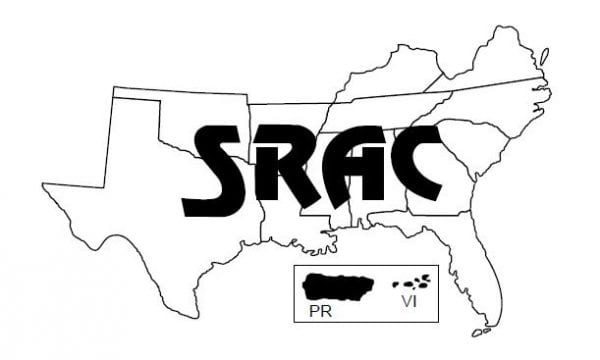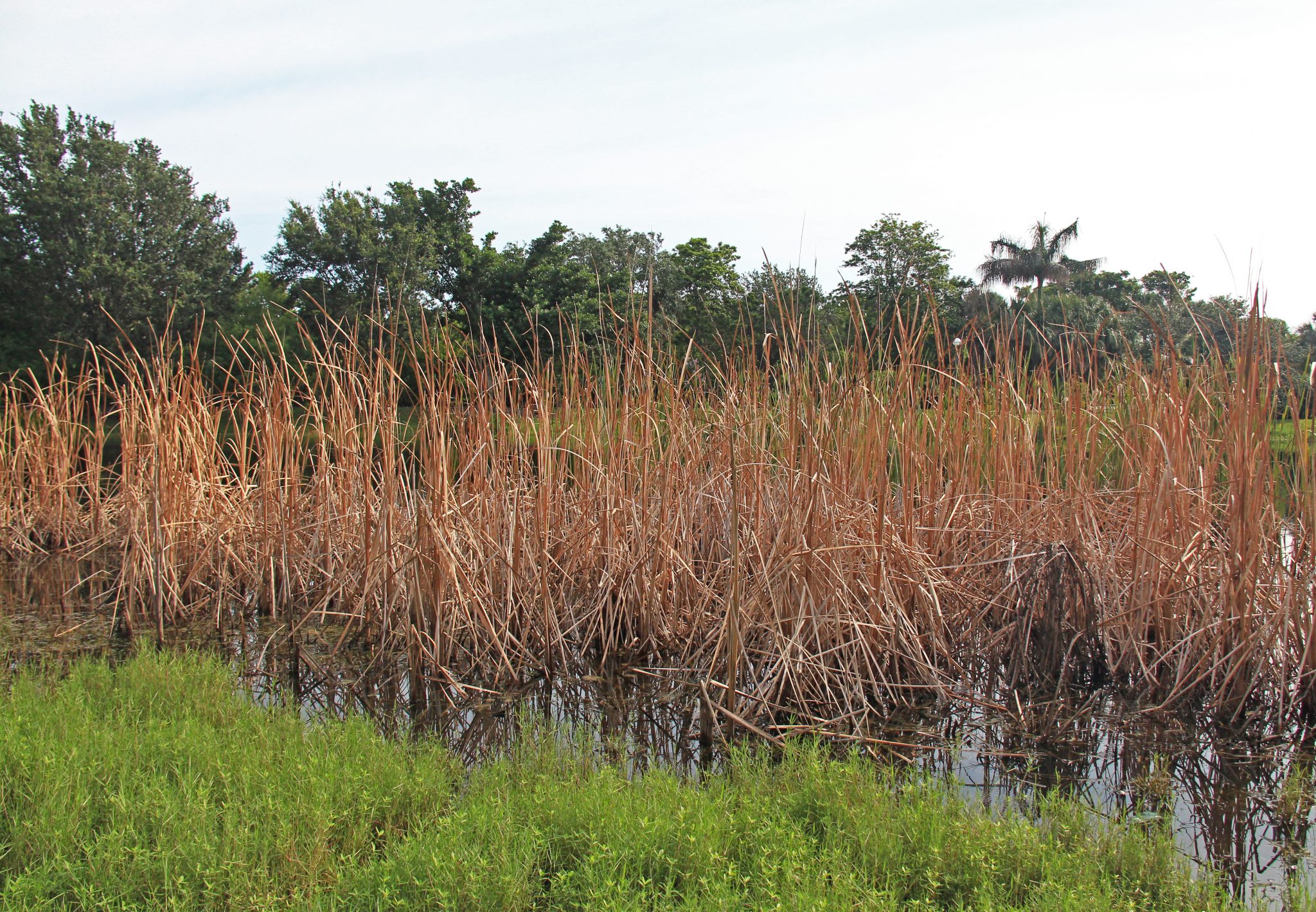Fish & Water

Lakes and ponds can develop dense stands of aquatic vegetation that interfere with intended uses and destroy the natural beauty of the water. Most aquatic weed problems result from poor planning and poor management. Manipulating factors such as water, light, and nutrients can help prevent weed growth.
If weed problems develop, you must take measures to reduce the plant population to manageable levels.
Preventive Measures
Pond Construction. Construct ponds to reduce habitats that are favorable to undesirable aquatic plants. Design ponds so that enough water is available year-round to maintain water levels close to the maximum.
Divert excess water, when possible, around rather than through the pond to prevent the loss of added nutrients. Nutrients are important in maintaining a plankton bloom that shades out less desirable plant species. Water entering a pond should not contain excessive nutrients such as from sewage or from runoff from feedlots or barnyards.
It is difficult for aquatic weeds to become established in deep water. However, once established in shallow areas, they gradually invade deeper water. Build your ponds with steep banks that have a 1-to-1 or 1-to-1.5 slope until the water depth is at least 2.5 feet.
Fertilization. Fertilization of farm ponds is a practical and inexpensive way to prevent the establishment of aquatic vegetation and to increase fish production. Fertilization during spring, summer, and fall stimulates the growth of desirable plankton algae (tiny plants suspended in the water) which shade the pond bottom, preventing the establishment of rooted aquatic weeds.
Water Level Control. Controlling the water level is another practical way to manage some aquatic weeds. As much as 90 percent of the submerged vegetation can be reduced by drawing down the water level during three consecutive winters. Also, the number and size of harvestable game fish have been shown to increase following drawdowns.
For a small farm pond, a drawdown every 3 or 4 years exposing at least one-half of the bottom may be helpful in controlling submerged vegetation. Conduct the drawdown in late fall, and do not allow the pond to refill until early spring.
Irawdown may spread needlerush, southern watergrass, and Florida elodea (Hydrilla) to new areas of a pond. Do not use drawdown where these weeds are present.
Mechanical Control. Manual removal is practical only for small quantities of plants near the shore. Techniques such as cutting, mowing, raking, digging, and pulling can remove small isolated areas of cattails, sedge, and grasses.
Aquatic weed cutters and harvesters are available for removing aquatic weeds, but they usually are too expensive for most landowners. Aquatic habitats vary greatly from site to site, and equipment that works well in one situation may not be effective in another.
Plant fragments left in water may deplete dissolved oxygen if they die and decompose. Often, they form roots and colonize new areas if they live. Harvesting the plant material is costly; it presents disposal problems; and it is usually the most expensive weed control practice available.
Biological Control. The cost of herbicides, coupled with the concern surrounding the continued use of pesticides, has caused interest in the development of biological controls for aquatic weeds. Biological weed control, strictly defined, means the use of natural enemies (parasites, predators, and pathogens) for the control of weeds. Although there is considerable research under way, there are few proven biological control agents now available.
One potentially important biological control agent for alligatorweed is the alligatorweed flea beetle, Agasicles hygrophila. This beetle is a parasite of alligatorweed and naturally occurs in South America. The beetle feeds exclusively on alligatorweed and completes its life cycle on the host plant. Where environmental conditions are favorable, the beetle population multiplies rapidly, and all alligatorweed above the waterline is consumed. Beetles then move to other alligatorweed-infested areas.
The alligatorweed flea beetle has been used to control alligatorweed in Louisiana, Georgia, and northern Florida. Freezing, excessively high temperatures (90 degrees F and above), insecticides, and flooding have hindered successful establishment of the beetles.
The grass carp or white amur, Ctenopharyngodon idella, is another important biological control agent. This fish, a native of Russian and Chinese rivers, was imported into the United States in 1963 and evaluated as a potential food fish and aquatic weed control agent. It was evident from the start that grass carp showed potential to control most submerged and some floating aquatic weeds in ponds.
Grass carp are related to the common carp but differ significantly in several important characteristics. Grass carp feed on aquatic plants and, unlike common carp, do not disturb bottom sediments that muddy the pond. Grass carp will not disrupt the spawning of bass and bream. Also, grass carp require running water to spawn and will not spawn in ponds or other standing waters.
Grass carp are capable of eating two to three times their own weight in aquatic plants each week and may gain 5 to 10 pounds in a single year. Stocked in the correct numbers in ponds, they control filamentous algae, submerged plants, floating duckweeds, and water fern. Compared to commonly used mechanical and chemical systems of aquatic weed control, the use of grass carp is relatively inexpensive and provides long-lasting control.
Grass carp are spawned artificially and sold by commercial fish dealers throughout the state. Fingerlings (8 to 12 inches) for stocking ponds are usually available year-round.
Watermeal has been successfully controlled using a tropical African fish called tilapia. Tilapia die at water temperatures below 50 degrees F, so their use is restricted to May through October. Stock 15 pounds of male and female tilapia per acre during May or June. Reproduction usually adds sufficient numbers to control watermeal during one season. A diquat herbicide application in combination with tilapia helps control more serious problems. Stocking tilapia in successive years may also be necessary. In ponds with bass, stock tilapia larger than 5 inches so the bass will not eat them.
Chemical Control. Several herbicides are effective in controlling aquatic weeds. Before using a herbicide, identify the weed correctly so that the proper herbicide is matched to the particular weed problem. Aquatic plants that cause weed problems are divided into four groups: algae, floating, submerged, and emergent.
Algae are small, usually microscopic plants lacking leaves, roots, and stems. These plants consist of only one cell, a group of cells called a colony, or a chain of cells called a filament. Algae may grow freely suspended in the water (plankton), floating at the water surface (pond scum), or attached or unattached to the bottom.
Floating weeds, such as duckweeds and water hyacinth, have leaves and stems above the water surface and roots suspended below. They are usually free-floating.
Submerged weeds are usually rooted to the bottom and often extend up to the water surface. Common weeds in this group are pondweeds, coontail, and watermilfoil.
Emergent weeds, such as cattails, alligatorweed, and smartweed, usually occur on or near the shore and in shallow water areas. They are rooted in the bottom, and their leaves and/or stems extend above the water surface. This group includes weeds growing around pond or lake margins.
Responsible and effective use of aquatic herbicides requires careful consideration of many factors. The most important factor is the safety of the people using the treated water. Contamination of domestic water supplies or a failure to observe proper precautions in water-use restrictions may result in health hazards. Also consider water use by farm animals, wildlife, fish, and waterfowl before using a herbicide. The label on the herbicide container can provide you with specific information on the proper use of the chemical.
As dead aquatic plants decay, dissolved oxygen in the surrounding water is used in the process. If large numbers of plants are killed with one treatment, dissolved oxygen in the water may be reduced so severely that fish and other aquatic organisms die. It is usually desirable to treat only a portion of a weed problem at a time and allow the body of water to recover lost oxygen before continuing with subsequent treatments.
The possibility of low oxygen becomes more serious during the summer when the water is warm. If possible, deal with weed problems in the spring when water temperatures are between 70 and 80 degrees F.
Herbicides Used in Water
Learn how herbicides can be used to control aquatic weeds in the following fact sheets from the Southern Regional Aquaculture Center (SRAC). Alabama Extension is a partner in SRAC, which funds and develops projects to meet aquaculture industry needs. Always read the product label for application methods, specific rates, and weeds controlled.
- SRAC 0360: Aquatic Weed Management: Control Methods
- SRAC 0361: Aquatic Weed Management: Herbicides
- SRAC 3601: Aquatic Weed Management: Herbicide Safety, Technology and Application Techniques
- SRAC 3602: Aquatic Herbicide Mode of Action and Use Implications
SCRAC is sponsored by the United States Department of Agriculture National Institute of Food and Agriculture.

John W. Everest, Extension Weed Scientist, Professor, Agronomy and Soils, and David R. Bayne, Professor, Fisheries and Allied Aquaculture, both at Auburn University.
Reviewed May 2022, Weed Management in Lakes and Ponds, ANR-0048

